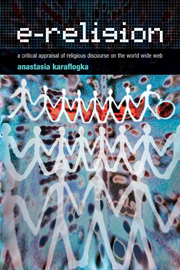1 - Introduction
Summary
Introducing the Field/Study
Prologue
The advancement and contemporary development of information communication technologies (ICTs) have created new media which have changed and will continue to change almost all human perceptions of daily activities in all areas of life, whether these be professional, financial, educational, commercial, social, political, cultural and/or religious.
From its conception, and up to the beginning of the 1990s, ICTs were a territory occupied solely by an elitist minority consisting of academics, the military and computer scientists. Today, their widespread usage suggests that the public now occupies the foreground of “online life”, which in turn indicates that the “computer world now supports a new and real social space” (Cybernauts Awake! 1999) where people can “meet” to interact, to exchange ideas, knowledge, information and experience, to give substance to creative, imaginative and innovative new concepts and ideas and to re-locate, re-evaluate and deconstruct old concepts and ideas in a new setting.
This is the first time in history that a medium offers, theoretically, unlimited access to an open space, thus providing the opportunity to all humankind to express itself to a global audience. The presence of humanity's vast diversity of cultures, languages, political and economic systems, institutions, ways of life, religions and individuals constitutes the Internet's identity and uniqueness, representing the experiences of all those who participate in the formation of that identity, differentness and diversity.
- Type
- Chapter
- Information
- E-ReligionA Critical Appraisal of Religious Discourse on the World Wide Web, pp. 1 - 28Publisher: Acumen PublishingPrint publication year: 2007

